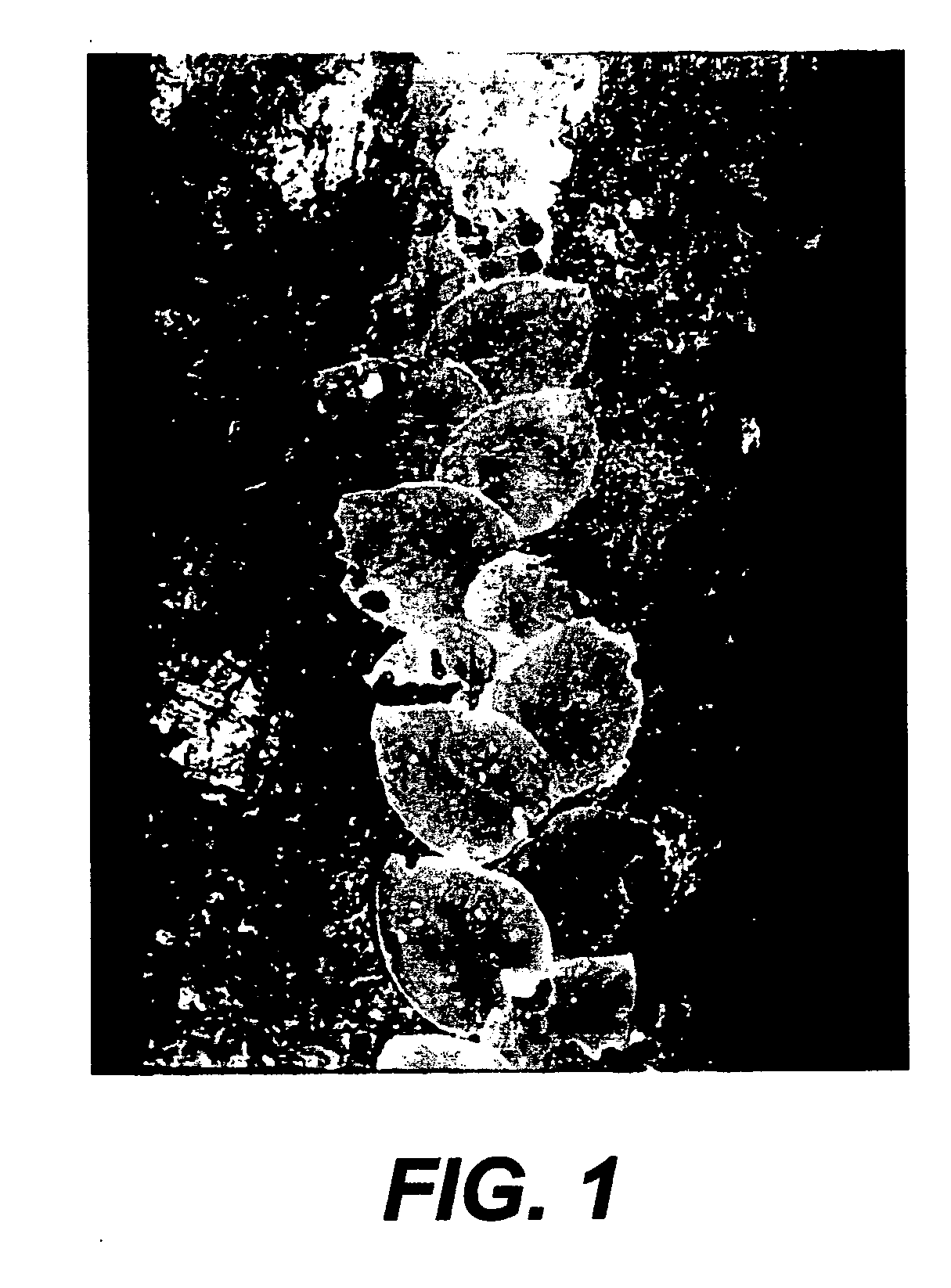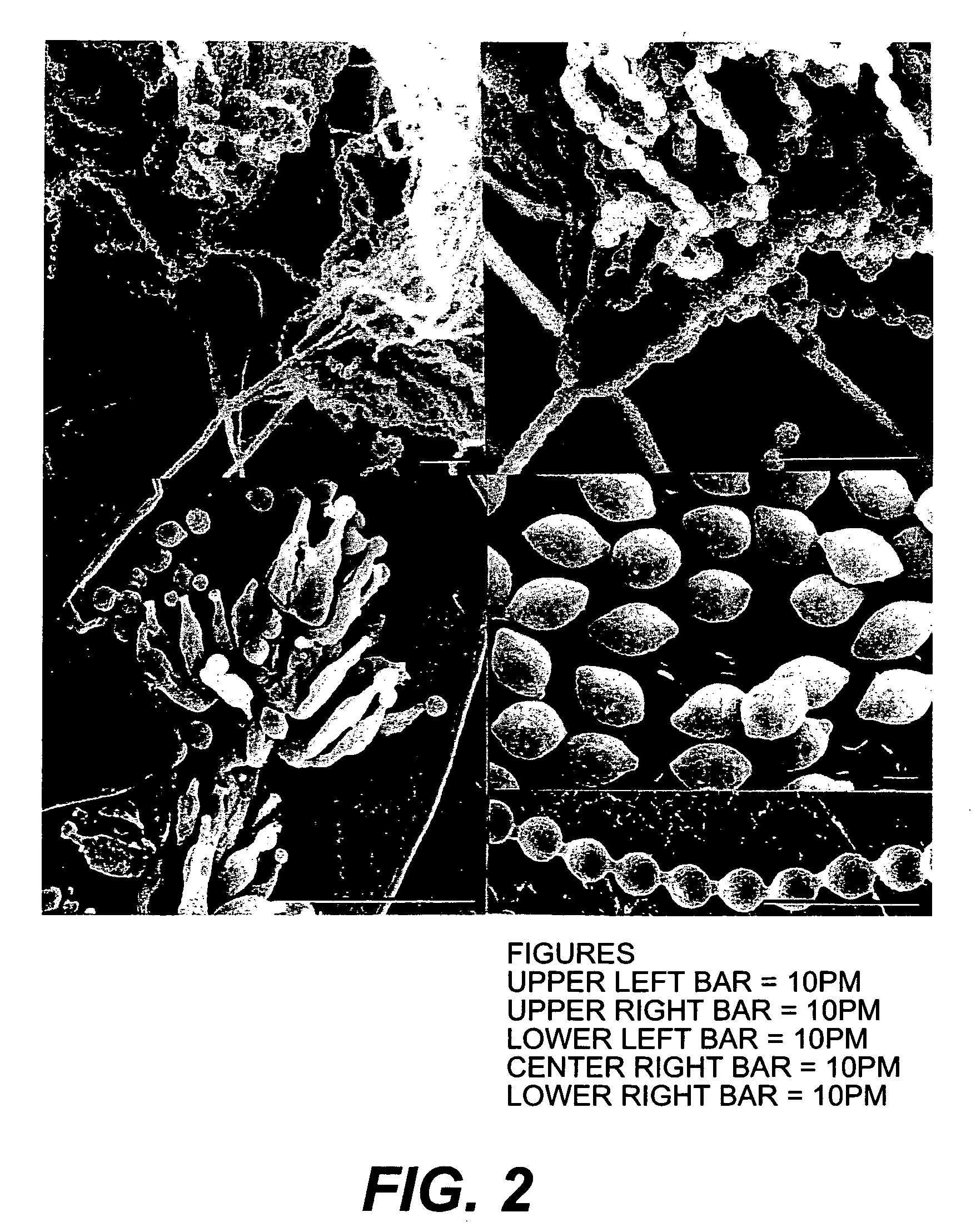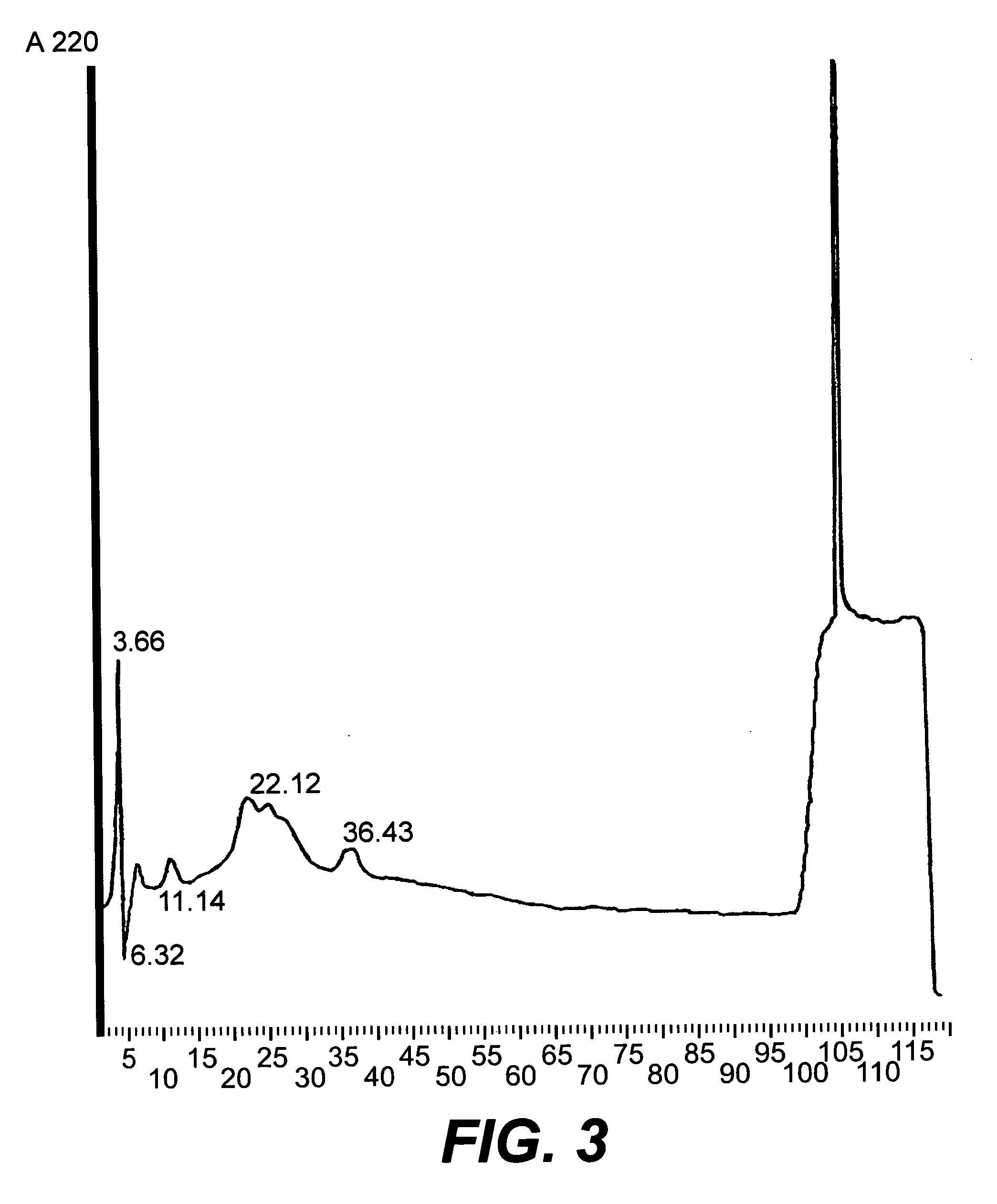Coronamycins
a technology of coronamycin and coronamycin, which is applied in the field of coronamycin, can solve the problems of increased incidence of parasitic protozoan infections, toxic and ineffective antifungal agents currently available, such as amphotericin b, and weakened immune systems
- Summary
- Abstract
- Description
- Claims
- Application Information
AI Technical Summary
Benefits of technology
Problems solved by technology
Method used
Image
Examples
example 1
Isolation and Identification of the Endophytes of Monstera speciosa
[0106] Stems (about 0.2-0.4 cm in diameter) of Monstera speciosa (FIG. 1) were obtained in the Lake Sandoval area of the Bahuaja Sonene Park Nacional in the upper Amazon region of Peru at 12° 36′ 25″ South and 69° 01′ 54″ W. The stems were thoroughly treated with 70% ethanol and then the outer bark removed with a sterilized sharp blade. The inner pieces of the stem, containing the cambium, phloem, and xylem tissues, were plated on water agar in Petri plates. After incubation for 10 or more days at 23° C., individual fungal and bacterial colonies were removed with a sterile fine tipped needle and transferred onto potato dextrose agar (PDA) composed per liter of 39 g of potato dextrose agar. The plates were continuously monitored for spore formation by stereo and light microscopy.
[0107] This organism was deposited as Streptomyces sp. P-25-2-4 as culture No. MSU-2110, of the Montana State University Mycological (MONT)...
example 2
Isolation Procedures for Coronamycin
[0116]Streptomyces sp. (MSU-2110) was grown as an even lawn on PDA plates for at least 7 days at 23° C. One quarter of the agar plate was used to inoculate 1 liter of PSNB medium in a 2 liter flask and the flask was left standing at 25° C. for 3 to 4 weeks. Potato Sucrose Agar Natural (PSNB) is a high nutrient medium with sucrose and natural potato pellets as carbon source (Basic American, Rexburg Id., USA). PSNB medium was composed per liter of 20 g of sucrose and 15 g of potato pellets. Thick pink-purple-brown layers of the organism developed on the surface of the liquid after 2 to 3 weeks.
[0117] For extraction of the secondary metabolites; the culture was filtered through two layers of cheesecloth and the filtrate was extracted three times with 0.5 equal volumes of methylene chloride. The organic solvent was pooled and dried under flash evaporation at 40° C. The yield of dried residue was about 150 mg per liter.
[0118] The dried residue was d...
example 3
Chemical Characterization of Coronamycin
[0122] Only final step HPLC preparations of the coronamycin were used to both chemically and biologically characterize the compound.
[0123] UV Spectrum. Analysis of the UV absorption spectrum of coronamycin, in methanol, produced peaks at 208 nm, 214 nm, and a broad band at 270 nm with millimolar extinction coefficients of 2.86, 2.03, and 0.23, respectively. The absorption band at 208 nm suggested the presence of amido chromophoric groups which would be consistent with the presence of one or more peptide bonds in the molecule (Silverstein et al., 1991, Spectrometric Identification of Organic Compounds. Wiley and Sons, New York). The broad band at 270 nm hinted at the presence of an aromatic moiety in the molecule (Silverstein, 1991, supra). The 1H NMR spectrum suggested that the primary nature of the coronamycin is that of a functionalized peptide (FIG. 4).
[0124] Amino acid analyses. The HPLC purified bioactive fraction of coronamycin was di...
PUM
| Property | Measurement | Unit |
|---|---|---|
| Fraction | aaaaa | aaaaa |
| Mass | aaaaa | aaaaa |
| Mass | aaaaa | aaaaa |
Abstract
Description
Claims
Application Information
 Login to View More
Login to View More - R&D
- Intellectual Property
- Life Sciences
- Materials
- Tech Scout
- Unparalleled Data Quality
- Higher Quality Content
- 60% Fewer Hallucinations
Browse by: Latest US Patents, China's latest patents, Technical Efficacy Thesaurus, Application Domain, Technology Topic, Popular Technical Reports.
© 2025 PatSnap. All rights reserved.Legal|Privacy policy|Modern Slavery Act Transparency Statement|Sitemap|About US| Contact US: help@patsnap.com



